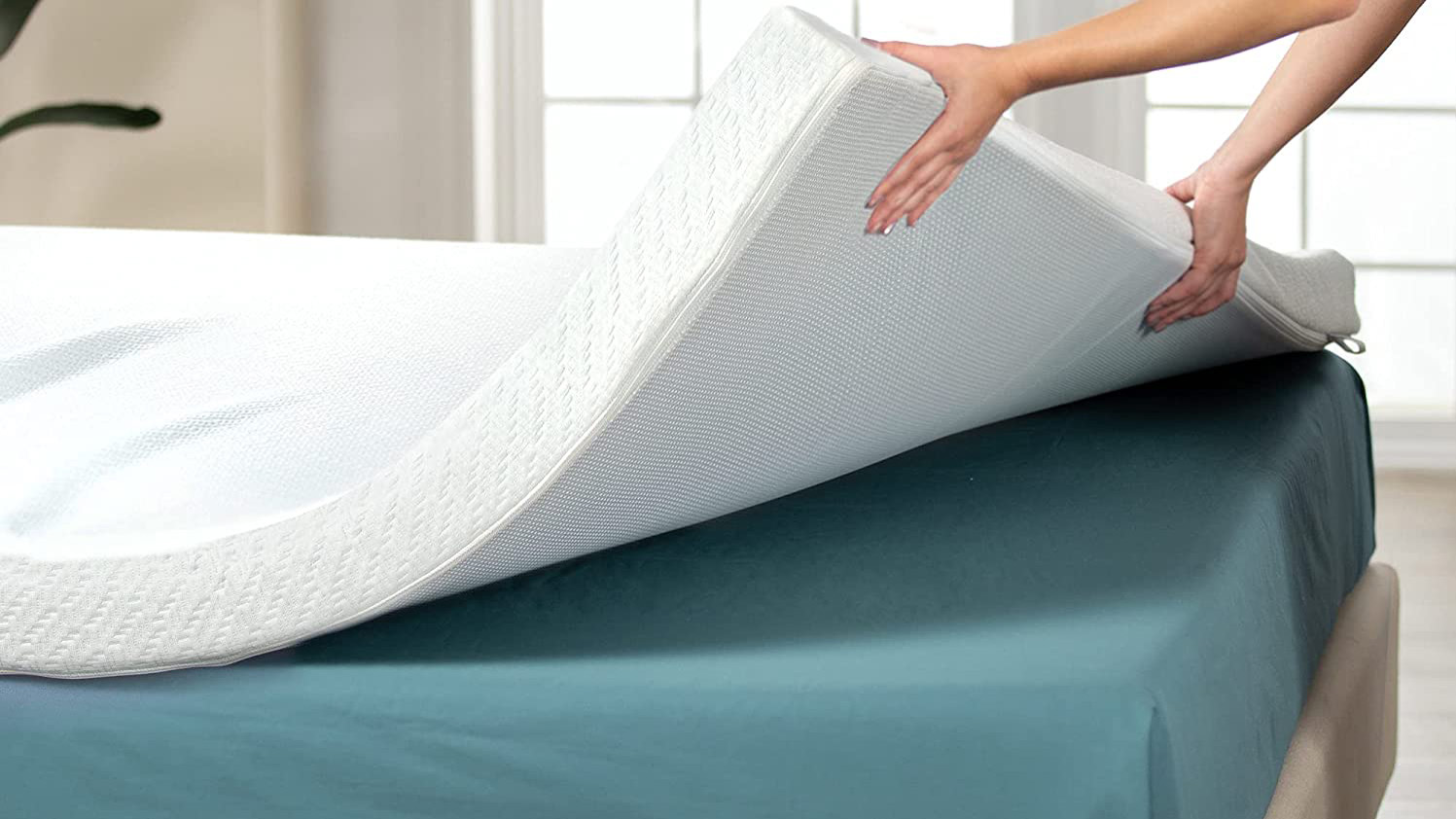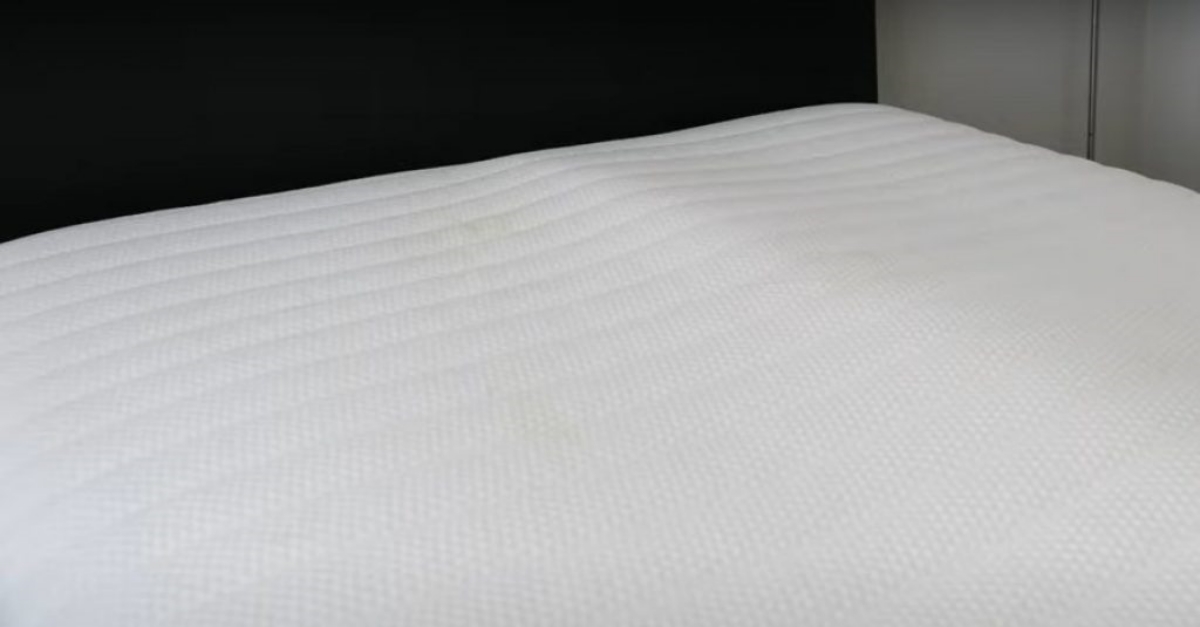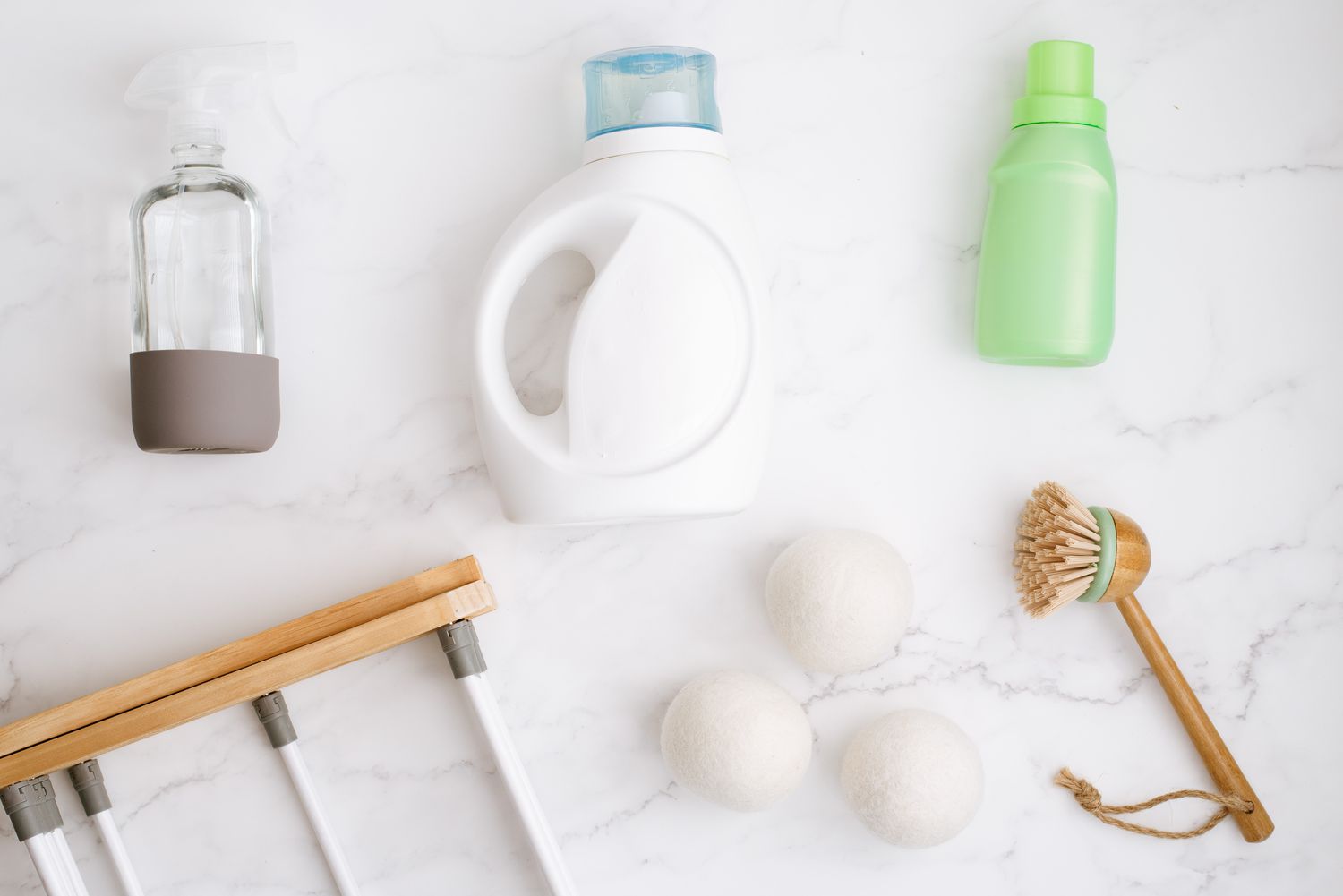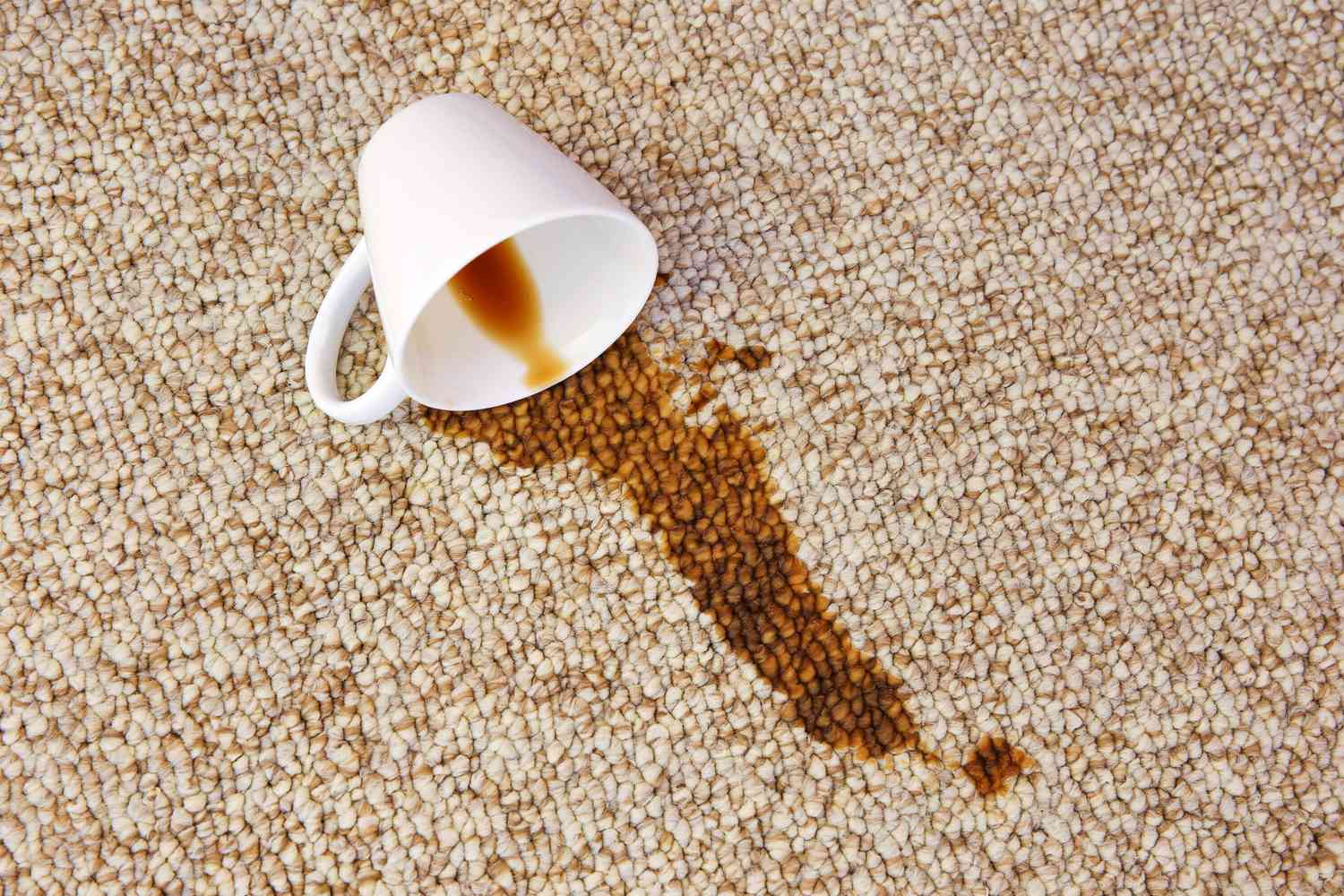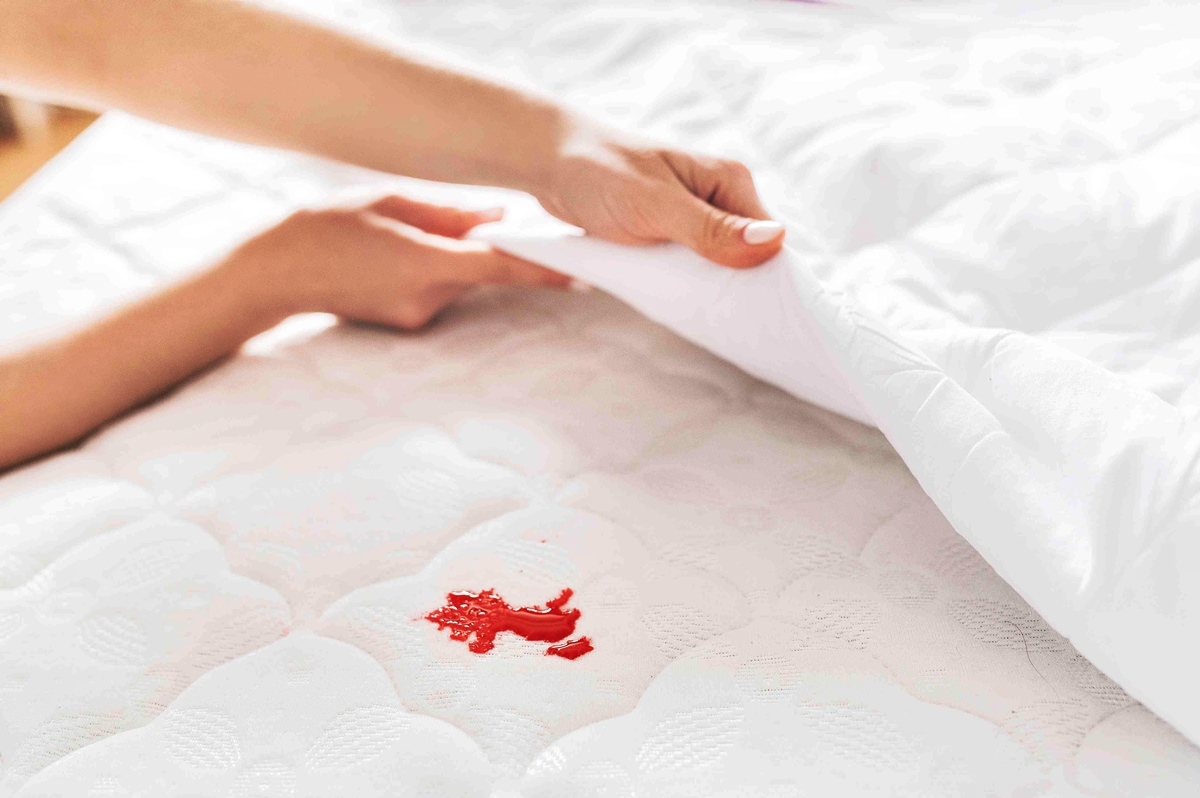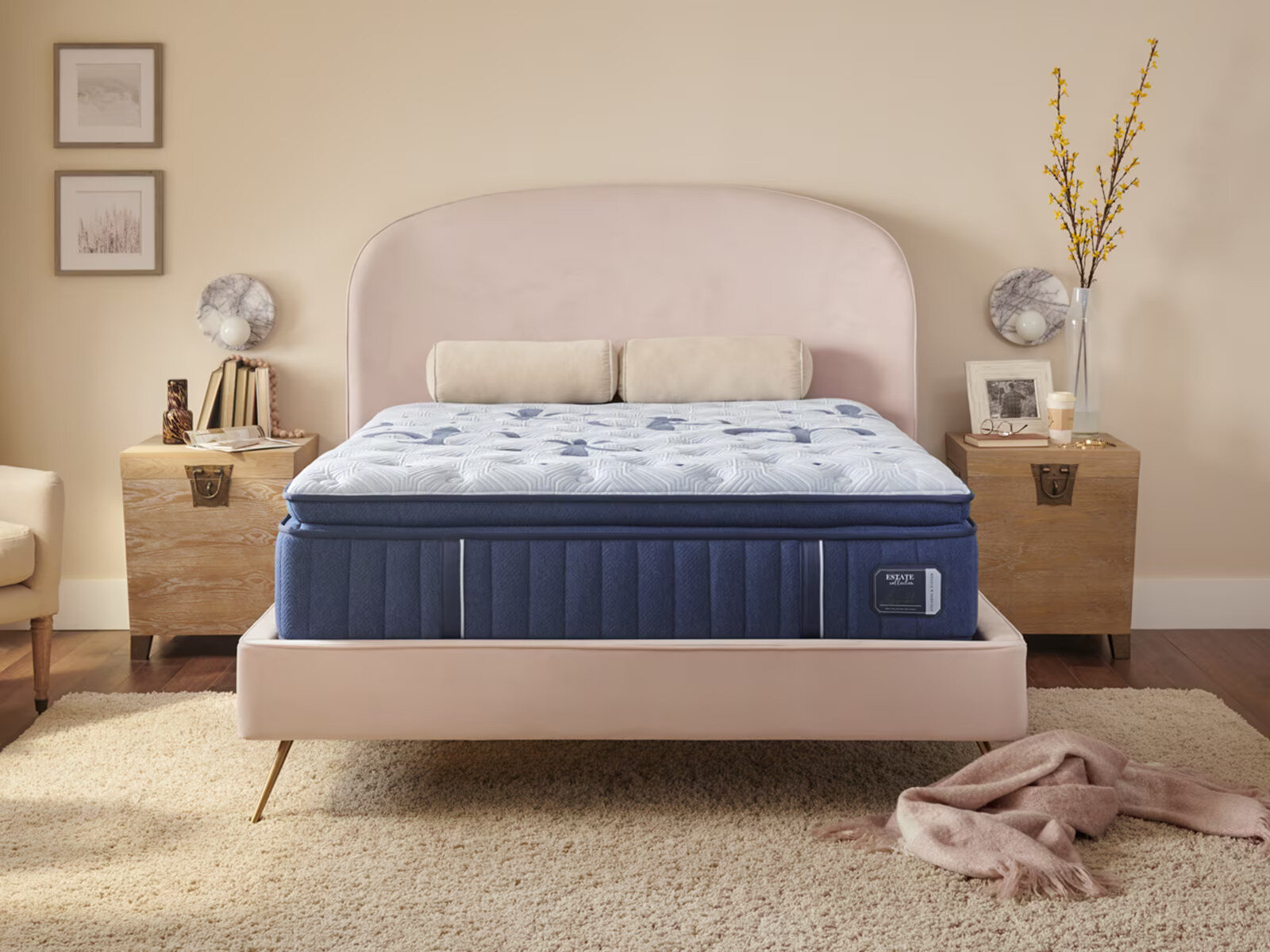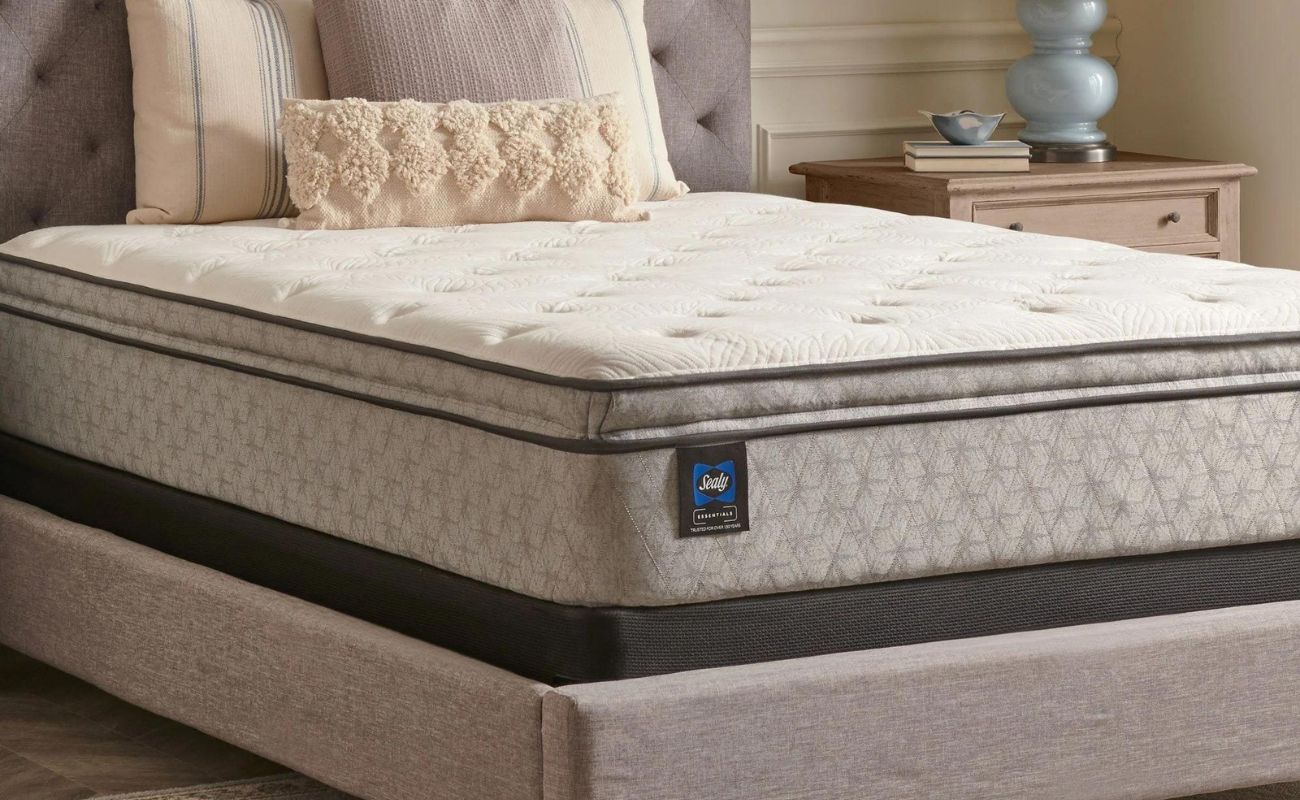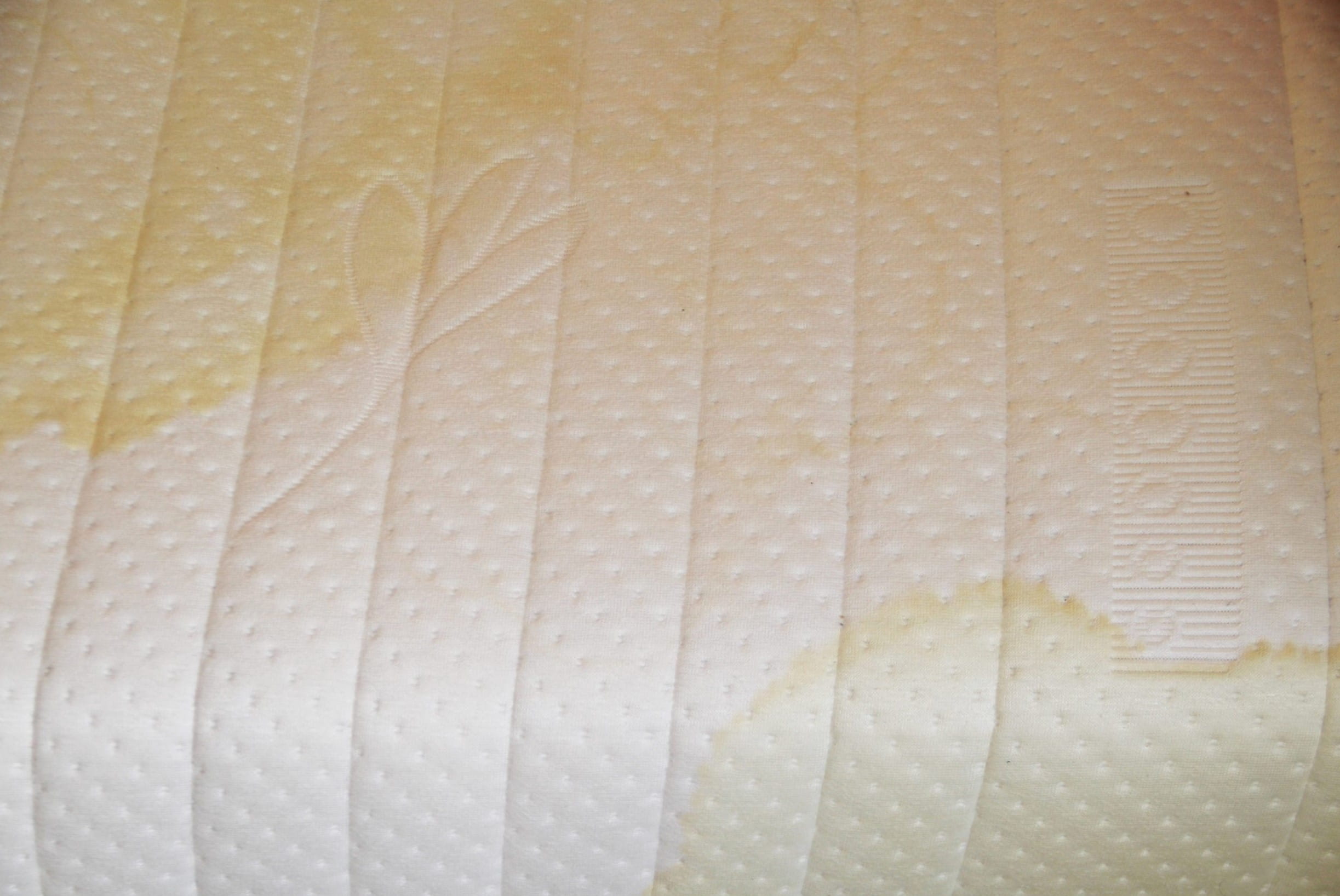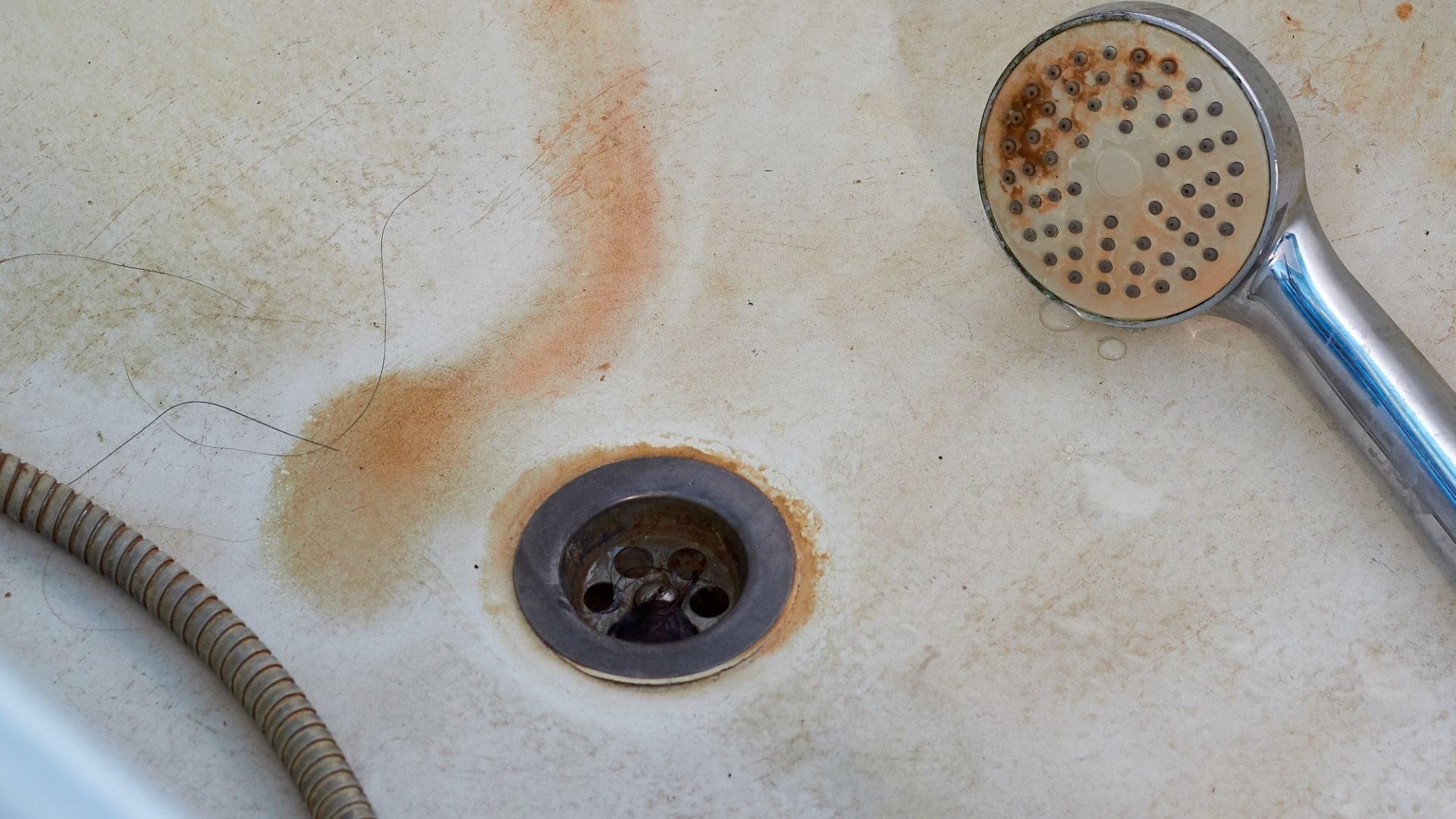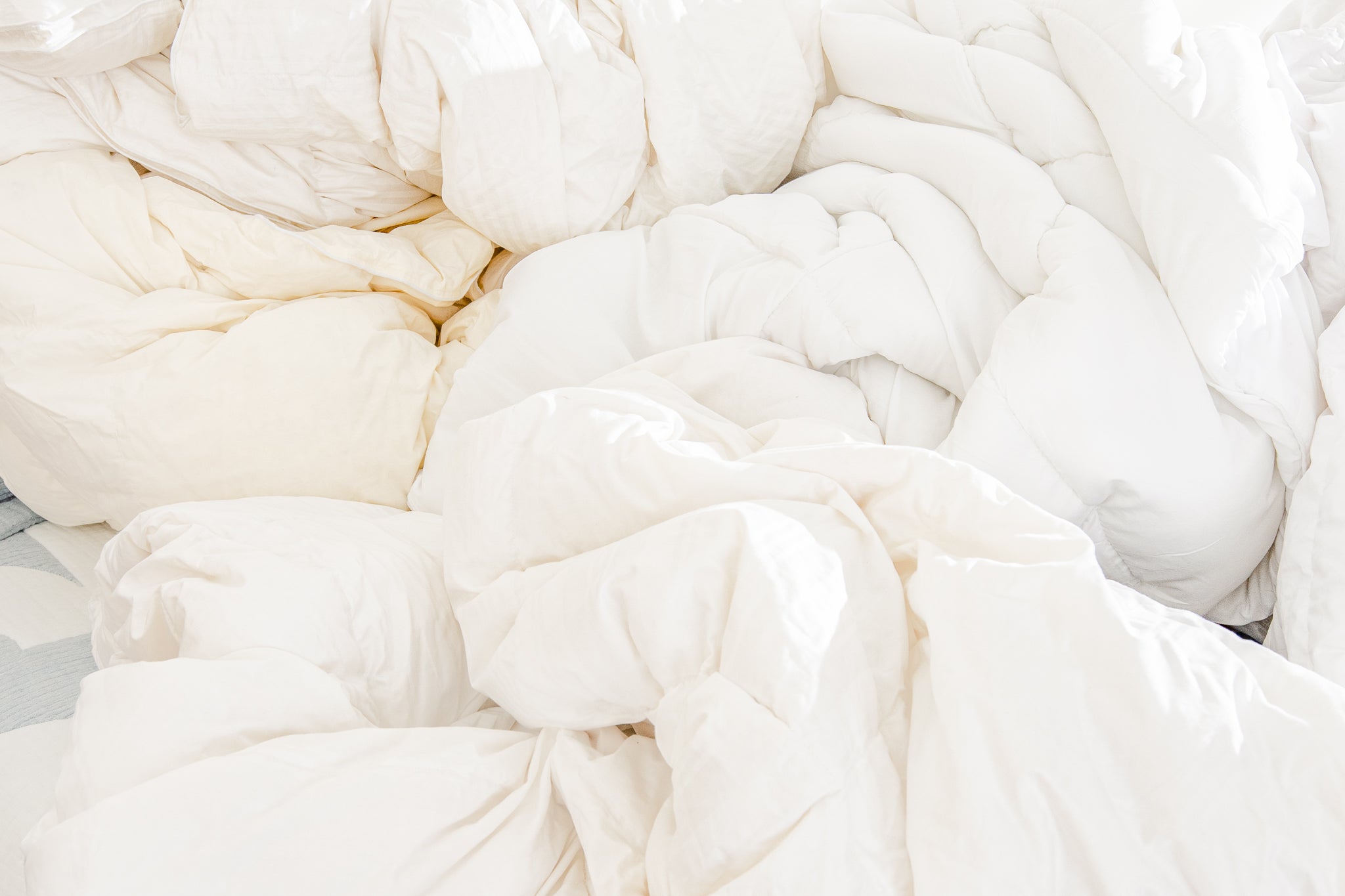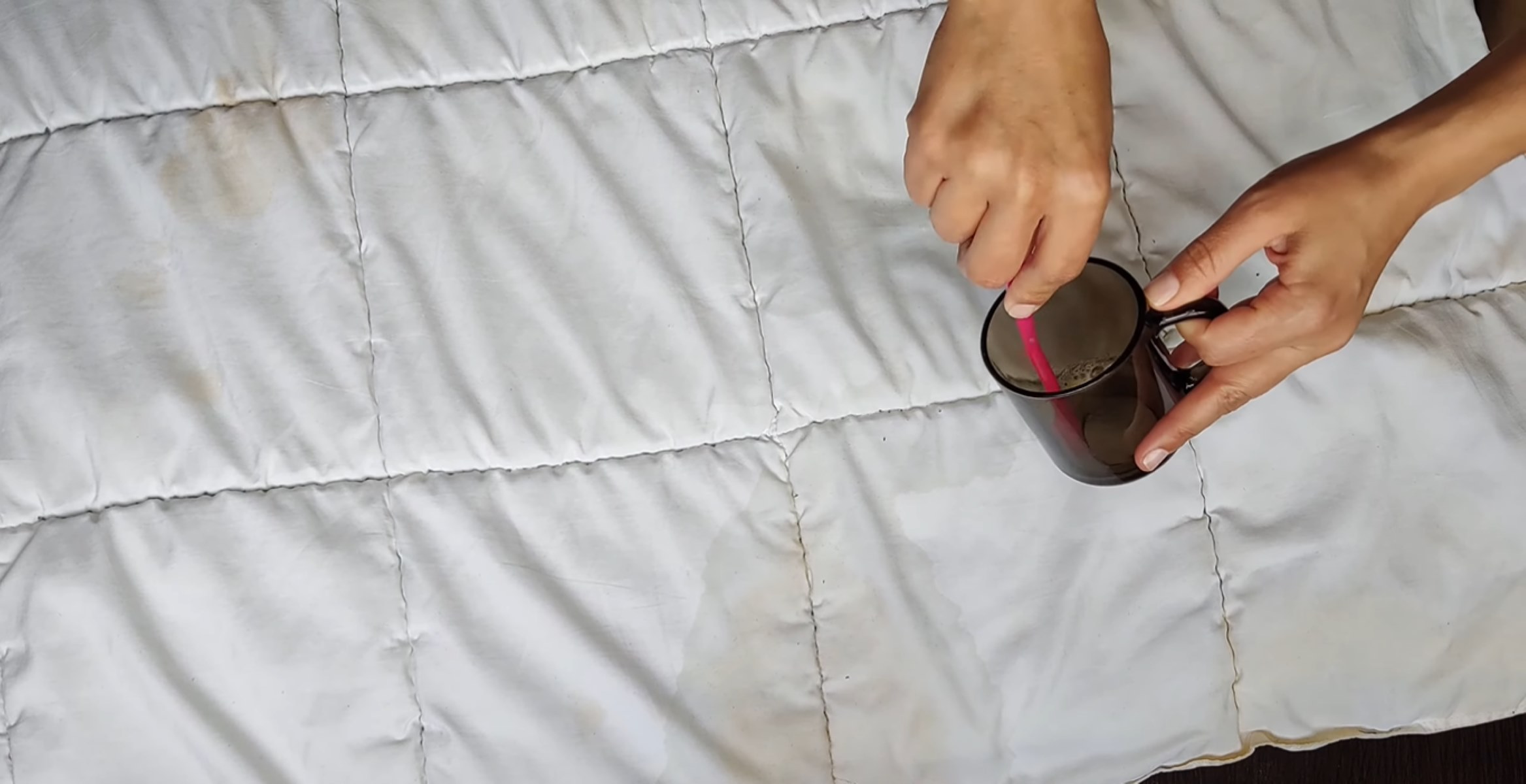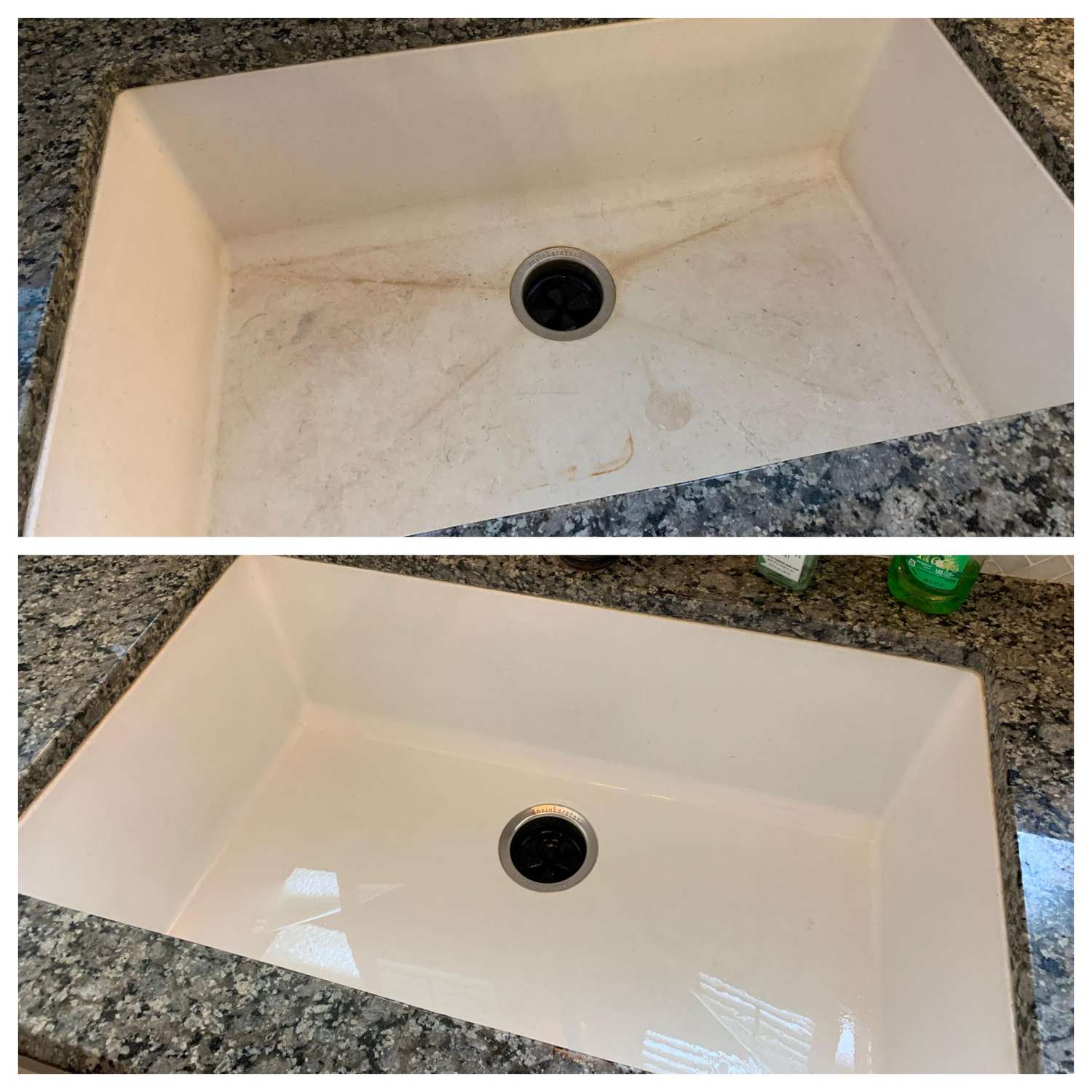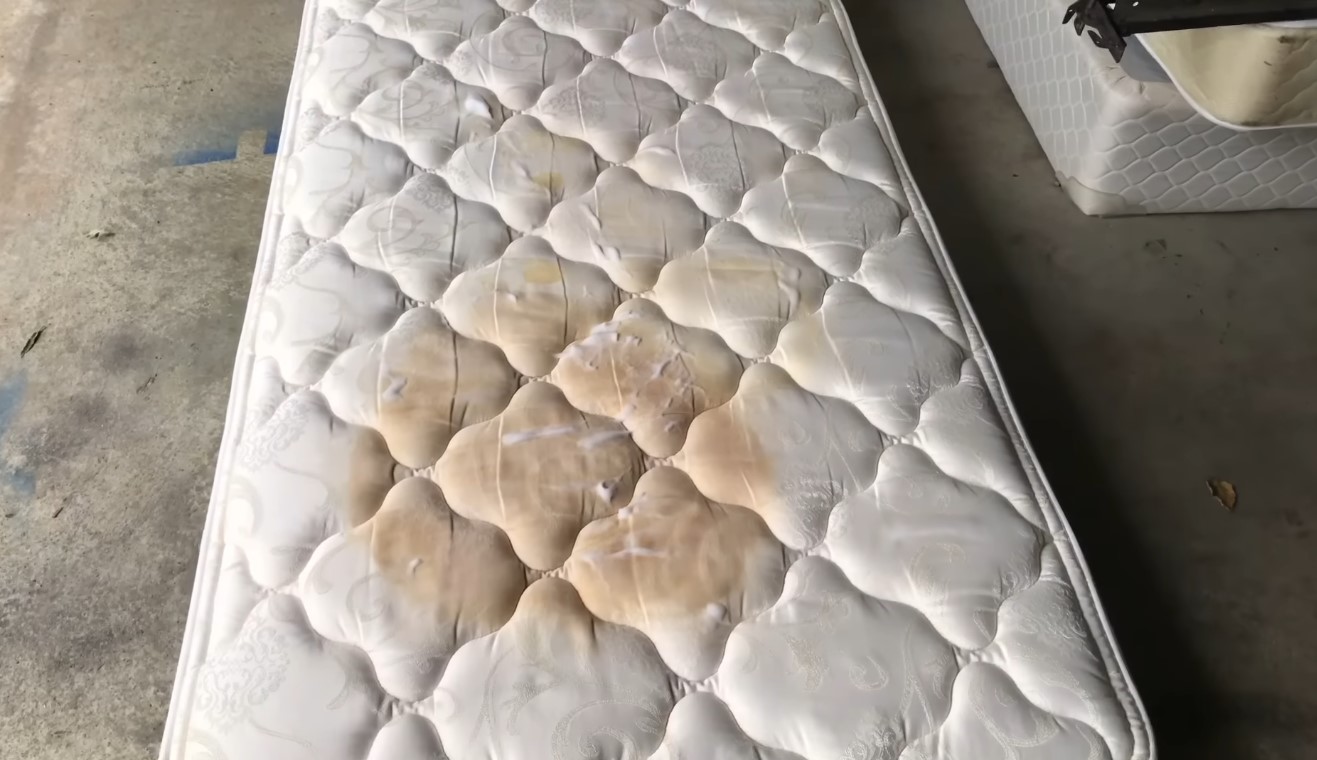Home>Furniture>Bedroom Furniture>How To Get Stains Out Of A Pillow Top Mattress
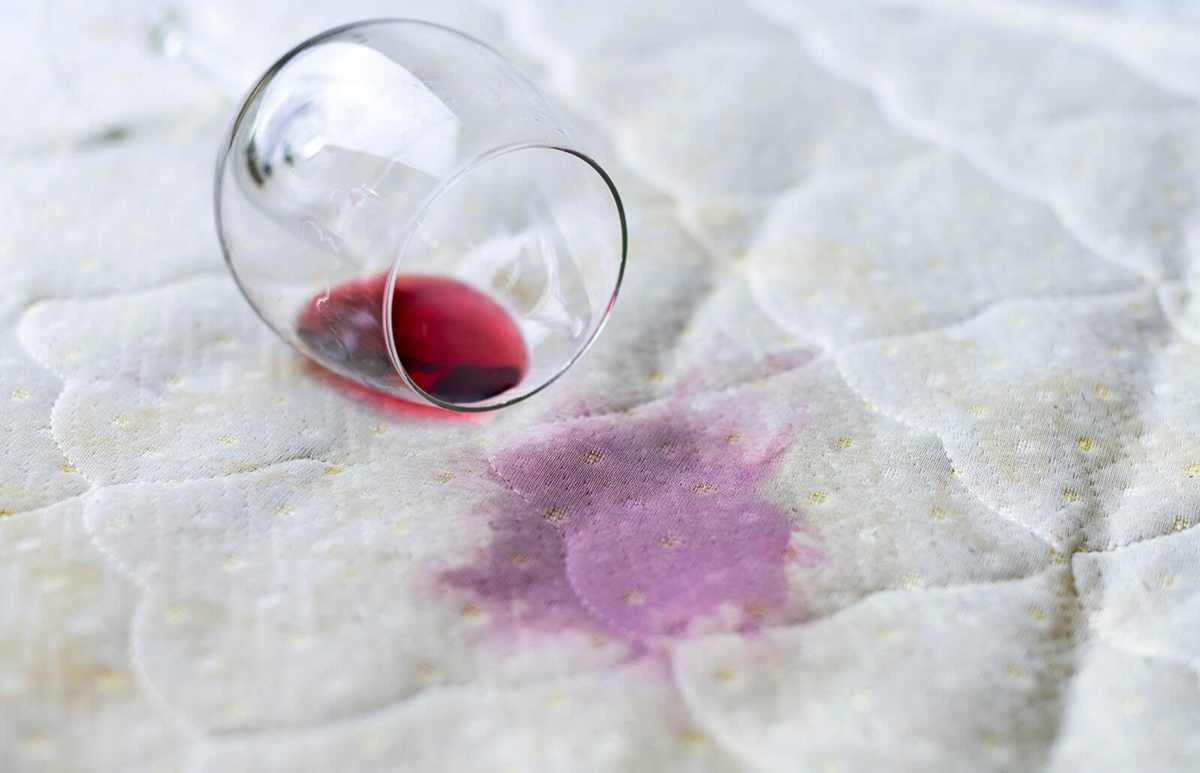

Bedroom Furniture
How To Get Stains Out Of A Pillow Top Mattress
Modified: January 6, 2024
Learn effective methods to remove stains from your pillow top mattress with our easy-to-follow guide. Enhance the longevity and appearance of your bedroom furniture with these simple tips.
(Many of the links in this article redirect to a specific reviewed product. Your purchase of these products through affiliate links helps to generate commission for Storables.com, at no extra cost. Learn more)
Introduction
A pillow top mattress is a luxurious and comfortable choice for anyone looking to enhance their sleep experience. These mattresses feature an extra layer of plush padding on top, providing added cushioning and support. However, just like any other mattress, pillow top mattresses are prone to stains and spills over time. From sweat stains to food and beverage mishaps, these stains can be unsightly and potentially affect the integrity of your mattress. But fear not, because in this article, we will explore effective techniques for getting stains out of a pillow top mattress, leaving it fresh and clean.
Understanding the construction and features of a pillow top mattress is essential in effectively addressing the issue of stains. A pillow top mattress consists of a comfort layer sewn onto the top surface of the mattress. This layer is typically made of soft materials like memory foam, latex, or plush fibers. The purpose of this extra layer is to provide an additional layer of cushioning and relieve pressure points during sleep. The pillow top adds a plush and luxurious feeling, making the mattress incredibly comfortable. However, the thick layer can make stain removal a bit more challenging.
Common stains found on pillow top mattresses can vary, but some of the most common include sweat stains, urine stains, blood stains, and food and beverage stains. Sweat stains are prevalent due to our natural perspiration during sleep. Urine stains can occur from accidents or pets. Blood stains can result from small cuts or menstrual accidents. Food and beverage stains can be caused by eating or drinking in bed, or accidental spills. Understanding the source and type of stain is crucial for choosing the appropriate stain removal technique.
Before diving into the specific stain removal methods, it’s important to prepare the mattress properly. Start by removing all bedding and linens from the mattress. This will allow better access to the stained area. Next, use a vacuum cleaner with a suitable upholstery attachment to remove any loose dirt, dust, or debris from the mattress surface.
Now that we have a basic understanding of pillow top mattresses and the common stains they can encounter, let’s explore the general techniques and specific methods to effectively remove those stubborn stains. Whether you’re dealing with sweat, urine, blood, or food and beverage stains, we’ve got you covered. With the right approach, you’ll be able to restore your pillow top mattress to its former glory.
Key Takeaways:
- Keep your pillow top mattress stain-free by understanding its construction, preparing it for stain removal, and using specific techniques for sweat, urine, blood, and food stains. Regular maintenance and proactive measures are key to a clean and fresh mattress.
- Maintain a stain-free pillow top mattress by rotating it regularly, using a mattress protector, and addressing spills promptly. Deep clean and deodorize with a steam cleaner and baking soda to keep your mattress fresh and odor-free.
Read more: How To Get Blood Stains Out Of Pillows
Understanding Pillow Top Mattresses
When it comes to ultimate comfort and a luxurious sleep experience, pillow top mattresses are a popular choice. But what exactly is a pillow top mattress, and what sets it apart from other mattress types?
A pillow top mattress is a type of mattress that features an extra layer of padding sewn onto the top surface. This layer of padding, often made from memory foam, latex, or plush fibers, provides an additional cushioning and comfort. The term “pillow top” refers to the appearance of the mattress, resembling a pillow placed on top of the mattress.
What sets a pillow top mattress apart from other types is the extra layer of padding and the luxurious feel it offers. This layer of padding adds an extra level of comfort and support, enhancing the overall sleep experience.
One of the key features of a pillow top mattress is its ability to conform to the contours of your body, providing targeted support and pressure relief. This is especially beneficial for those who struggle with pain in their joints or pressure points. The pillow top layer creates a plush and enveloping surface that helps alleviate pressure and distribute weight evenly.
Another noteworthy feature of pillow top mattresses is their durability. The additional layer of padding helps to prevent premature sagging and maintains the shape of the mattress over time. This can extend the lifespan of the mattress and ensure that you can enjoy its comfort for years to come.
Additionally, pillow top mattresses often come with motion isolation properties. This means that if you share your bed with a partner who tosses and turns during the night, the pillow top layer helps to minimize the transfer of motion. This can result in a more restful sleep, undisturbed by your partner’s movements.
Furthermore, pillow top mattresses are available in a range of firmness options, allowing you to find the perfect level of support and comfort that suits your preferences. Whether you prefer a plush and cloud-like feel or a firmer surface with gentle cushioning, there is a pillow top mattress to cater to your needs.
Overall, pillow top mattresses offer a luxurious and comfortable sleep surface that provides enhanced support, pressure relief, and durability. The extra layer of padding and the ability to conform to your body shape make them an excellent choice for those seeking a superior sleep experience.
Common Stains on Pillow Top Mattresses
Pillow top mattresses offer a cozy and luxurious sleep surface, but they are susceptible to stains and spills. Understanding the types of stains commonly found on pillow top mattresses, as well as their causes and sources, can help you effectively address and remove them.
Here are some of the most common stains you may encounter on your pillow top mattress:
- Sweat stains: Sweat is a natural part of our body’s cooling process during sleep. Over time, sweat can soak into the mattress, leading to unsightly yellowish stains. These stains can also cause an unpleasant odor.
- Urine stains: Accidents can happen, especially if you have young children or pets. Urine stains can be challenging to remove and may leave behind an unpleasant smell.
- Blood stains: Accidental cuts or menstrual accidents can result in blood stains on your pillow top mattress. Blood stains can be particularly stubborn and require specific stain removal techniques.
- Food and beverage stains: Enjoying a late-night snack or a morning cup of coffee in bed can sometimes lead to spills and stains on your mattress. Food and beverage stains can be unsightly and attract pests if not properly addressed.
The causes and sources of these stains can vary:
- Body oils and sweat can seep into the mattress fabric, leading to sweat stains. Factors such as hot sleeping conditions, heavy blankets, and the type of bedding used can contribute to increased sweating during sleep.
- Accidental spills, bed-wetting, or pets having accidents can result in urine stains on the mattress. If left unattended for too long, urine stains can promote the growth of bacteria and create an unpleasant odor.
- Minor cuts, nosebleeds, or menstrual accidents can cause blood stains on the mattress. Blood can be particularly challenging to remove, especially if it has dried or set into the fabric.
- Eating or drinking in bed increases the likelihood of food and beverage stains. Spills from coffee, tea, juice, wine, or food can leave marks on the mattress if not cleaned up promptly.
Understanding the type and source of the stain is essential in choosing the most effective stain removal method. Different stains require different techniques and cleaning solutions to ensure successful removal without damaging the mattress materials.
Now that you are aware of the common stains found on pillow top mattresses and their causes, it’s time to explore the steps and techniques to effectively remove these stains and restore your mattress to its pristine condition.
Preparing the Mattress for Stain Removal
Before diving into the process of removing stains from your pillow top mattress, it’s important to properly prepare the mattress. Taking the time to clean and clear the surface will ensure that you can effectively tackle the stains without any hindrances.
Here are two crucial steps to prepare your mattress for stain removal:
- Removing bedding and linens: Start by stripping off all the bedding and linens from your mattress. This includes pillows, pillowcases, sheets, mattress protectors, and any other removable covers. By removing these items, you’ll have better access to the stained areas and can treat them more effectively.
- Vacuuming the mattress: Once the bedding and linens have been removed, it’s important to thoroughly vacuum the mattress. Use a vacuum cleaner with a suitable upholstery attachment to remove any loose dirt, dust, or debris from the surface and crevices of the mattress. This will help eliminate any potential particles that could interfere with the stain removal process.
When vacuuming the mattress, pay close attention to the seams, edges, and corners where dust and debris tend to accumulate. A thorough vacuuming will not only help remove surface dirt but also freshen up the mattress and create a cleaner foundation for the stain removal process.
It’s important to note that if there are any large or solid debris on the mattress, such as crumbs or pet hair, it’s best to spot clean or remove them manually before vacuuming. You can use a soft brush or a clean cloth to gently brush away any loose debris before proceeding with the vacuuming.
Once you’ve removed the bedding and thoroughly vacuumed the mattress, you’re ready to start tackling those stubborn stains. The next steps will involve specific stain removal techniques and cleaning solutions tailored to the type of stain you’re dealing with. By preparing the mattress properly, you are setting the foundation for a successful stain removal process and ensuring that you achieve the best possible results.
General Stain Removal Techniques
When it comes to removing stains from your pillow top mattress, there are a few general techniques that apply to most types of stains. These techniques will help minimize the spread of the stain and prevent further damage to your mattress.
Here are two essential general stain removal techniques to keep in mind:
- Blotting and not rubbing the stain: When you notice a stain on your pillow top mattress, it’s crucial to avoid rubbing or scrubbing the stain vigorously. This can spread the stain further and push it deeper into the mattress fabric, making it more challenging to remove. Instead, gently blot the stain using a clean white cloth or paper towels. Press down lightly on the stain to absorb any excess liquid or moisture without spreading it around. Blotting helps lift the stain without making it worse.
- Homemade stain removal solutions: Before reaching for commercial stain removers, consider using household items to create your own stain removal solutions. Homemade solutions are often effective and can save you money. For example, a mixture of mild dish soap and warm water can be used to tackle most stains. Another common homemade solution is a mixture of hydrogen peroxide and baking soda, which can help remove tougher stains like blood or urine. Always test any homemade solution on a small, inconspicuous area of the mattress first to ensure it doesn’t cause any discoloration or damage.
When using a homemade stain removal solution, apply it to the stain using a clean cloth or sponge and gently blot the affected area. Allow the solution to sit on the stain for a few minutes to penetrate and break down the stain before blotting it up. Remember to work from the outside of the stain inward to prevent it from spreading.
It’s important to note that different types of stains may require different stain removal solutions and techniques. In the following sections, we will delve into specific stain removal methods for common types of stains, including sweat stains, urine stains, blood stains, and food and beverage stains. These specific techniques will target each stain’s unique characteristics and provide you with the best chance of successful stain removal.
By utilizing these general stain removal techniques and homemade solutions, you can effectively address a variety of stains on your pillow top mattress. However, always exercise caution and test any stain removal solution on a small, inconspicuous area first to ensure it doesn’t cause any damage or discoloration to your mattress.
Use a mixture of mild detergent and water to spot clean the stain on your pillow top mattress. Gently blot the stain with a clean cloth and allow it to air dry completely. Avoid using harsh chemicals or excessive moisture to prevent damage to the mattress.
Read more: How To Get Out Yellow Stains On A Mattress
Specific Stain Removal Methods
When it comes to specific stain removal on your pillow top mattress, each type of stain requires its own approach and cleaning technique. Here are some effective methods for removing common stains such as sweat stains, urine stains, blood stains, and food and beverage stains:
- Removing sweat stains: Sweat stains can leave yellowish discoloration on your mattress. To tackle sweat stains, create a mixture of mild dish soap and warm water. Dampen a clean cloth or sponge with the solution, and gently blot the sweat stain. Avoid soaking the mattress and work from the outside of the stain inward. Allow the solution to sit for a few minutes, then blot the stain with a clean cloth dampened with plain water to remove any soap residue. Finally, blot the area with a dry cloth to absorb excess moisture.
- Getting rid of urine stains: Urine stains can be particularly challenging to remove. Start by blotting up as much of the urine as possible using paper towels or a clean cloth. Mix equal parts of white vinegar and water, and apply the solution to the urine stain. Blot the stain gently, then sprinkle baking soda over the area to help absorb odor. Allow the solution to sit for 15-20 minutes, then use a vacuum cleaner to remove the baking soda. For stubborn urine stains, consider using an enzyme-based cleaner specially designed to break down urine odors and stains.
- Removing blood stains: Blood stains can be stubborn, but with the right approach, you can effectively remove them. Start by dampening a clean cloth with cold water and gently blotting the blood stain. Avoid using hot water, as it can cause the blood to set. Create a paste by mixing hydrogen peroxide and baking soda. Apply the paste to the blood stain and let it sit for 15-20 minutes. Gently blot the stain to lift it, then rinse the area with cold water. Wipe the excess moisture with a clean, dry cloth.
- Treating food and beverage stains: Food and beverage stains can be frustrating, but prompt action can help eliminate them. Start by blotting up any excess liquid or crumbs using a clean cloth or paper towels. Mix a small amount of mild dish soap with warm water and apply it to the stain using a clean cloth or sponge. Gently blot the stain, working from the outside inward. Avoid saturating the mattress. Rinse the area with a clean cloth dampened with plain water to remove any soap residue. Blot the area with a dry cloth to absorb excess moisture.
Regardless of the type of stain you are dealing with, it’s important to act quickly and avoid rubbing or scrubbing forcefully, as this can damage the delicate fibers of your pillow top mattress. Remember to test any cleaning solution on a small, inconspicuous area of the mattress first to ensure it doesn’t cause any discoloration or damage.
By utilizing these specific stain removal methods, you can effectively address sweat, urine, blood, and food and beverage stains on your pillow top mattress. With patience and care, you can restore your mattress to its clean and fresh condition.
Cleaning and Deodorizing the Mattress
Once you have successfully removed the stains from your pillow top mattress, it’s important to give it a thorough cleaning and deodorizing to ensure it is fresh and free from any lingering odors. Two effective methods for cleaning and deodorizing your mattress are using a steam cleaner and sprinkling baking soda:
- Using a steam cleaner: A steam cleaner is a powerful tool for deep cleaning and sanitizing your mattress. Follow the manufacturer’s instructions for operating the steam cleaner. Slowly pass the steam cleaner over the entire surface of the mattress, paying extra attention to any remaining stains or areas of concern. The high temperature of the steam will help kill any bacteria or dust mites that may be present, as well as remove any residue left behind from the stain removal process. Once you have finished steam cleaning, allow the mattress to dry completely before remaking the bed.
- Sprinkling baking soda for odor removal: Baking soda is a natural deodorizer and can help eliminate any lingering odors on your mattress. Simply sprinkle a generous amount of baking soda over the entire surface of the mattress. Use a clean brush or your hands to gently spread the baking soda evenly. Let the baking soda sit on the mattress for a few hours, or even overnight, to allow it to absorb any odors. Afterward, use a vacuum cleaner with an upholstery attachment to thoroughly remove the baking soda. This will leave your mattress smelling fresh and clean.
These cleaning and deodorizing methods are effective for routine maintenance and should be done periodically to keep your pillow top mattress in optimal condition. However, it’s important to note that excessive use of moisture, such as steam cleaning, can damage the materials in your mattress. Therefore, it is recommended to use a steam cleaner sparingly or when necessary.
In addition to these methods, using a mattress protector can help prevent future stains and keep your mattress clean and fresh for a longer period of time. A mattress protector acts as a barrier between your body and the mattress, preventing spills, stains, and sweat from reaching the surface of the mattress.
By regularly cleaning and deodorizing your pillow top mattress, you can maintain its freshness and extend its lifespan. These simple yet effective methods will ensure that you can enjoy a clean and comfortable sleep surface night after night.
Tips for Maintaining a Stain-Free Pillow Top Mattress
Prevention is key when it comes to maintaining a stain-free pillow top mattress. By implementing a few practical tips and taking proactive measures, you can extend the lifespan of your mattress and keep it looking fresh and clean for years to come. Here are two essential tips for maintaining a stain-free pillow top mattress:
- Regularly rotating the mattress: One of the simplest yet most effective ways to prevent stains on your pillow top mattress is to regularly rotate it. The weight of your body and the pressure exerted on the mattress can cause uneven wear and tear, making certain areas more susceptible to stains. By rotating your mattress every three to six months, you distribute the weight and pressure evenly, minimizing the risk of developing deep impressions and stains. Rotating also helps with the even distribution of the pillow top layer, ensuring consistent comfort and support throughout the mattress.
- Using mattress protectors: Investing in a high-quality mattress protector is an excellent way to safeguard your pillow top mattress from spills, stains, and allergens. A mattress protector acts as a barrier between your body and the mattress, creating an additional layer of protection. Look for a waterproof and breathable mattress protector that is specifically designed for pillow top mattresses. The waterproof feature ensures that any spills or accidents are contained and do not seep into the mattress. Additionally, a breathable mattress protector helps to regulate temperature and prevent moisture buildup, reducing the chances of developing sweat stains. The mattress protector can be easily removed and washed, making it a convenient and effective solution for maintaining a stain-free mattress.
In addition to these two key tips, it’s important to address any spills or accidents promptly. The longer a stain sits on your pillow top mattress, the more difficult it becomes to remove. If a spill occurs, blot it immediately using a clean cloth or paper towels to absorb as much liquid as possible. Then, follow the stain removal techniques discussed earlier to effectively treat the stain before it sets.
Regular vacuuming of your mattress can also help remove dust, dead skin cells, and other particles that can contribute to stains and odors. Aim to vacuum your mattress at least once a month, paying attention to the crevices, edges, and seams where debris tends to collect.
By incorporating these tips into your mattress care routine, you can significantly reduce the risk of stains and keep your pillow top mattress looking and feeling its best. With proper maintenance and proactive measures, you’ll enjoy a clean and stain-free sleep environment that promotes restful and rejuvenating sleep.
Conclusion
Maintaining a stain-free pillow top mattress is crucial for both the longevity of your mattress and the quality of your sleep. By understanding the construction and features of a pillow top mattress, as well as the common types of stains and their causes, you are equipped with the knowledge to effectively address and remove stains.
Proper preparation, such as removing bedding and linens and vacuuming the mattress, is essential before attempting stain removal. General stain removal techniques like blotting instead of rubbing the stain and using homemade stain removal solutions can help minimize damage and effectively treat most stains.
For specific types of stains, such as sweat stains, urine stains, blood stains, and food and beverage stains, tailored approaches can effectively remove them. From using mild dish soap for sweat stains to creating a baking soda and hydrogen peroxide paste for blood stains, these specific methods target individual stains and their unique characteristics.
After successfully removing stains, cleaning and deodorizing your pillow top mattress is important. Using a steam cleaner for deep cleaning and sanitizing, as well as sprinkling baking soda to absorb any odors, will leave your mattress fresh and clean.
To maintain a stain-free mattress, regularly rotating the mattress and using mattress protectors are two essential tips. Rotating the mattress distributes weight evenly, preventing uneven wear and tear and reducing the development of deep impressions and stains. Mattress protectors act as a barrier, preventing spills, stains, and allergens from reaching the mattress surface.
In conclusion, by implementing these tips and techniques, you can enjoy a stain-free pillow top mattress that provides optimal comfort and support for a peaceful night’s sleep. Take proactive measures, address stains promptly, and maintain regular care to ensure your pillow top mattress remains fresh, clean, and stain-free for years to come.
Frequently Asked Questions about How To Get Stains Out Of A Pillow Top Mattress
Was this page helpful?
At Storables.com, we guarantee accurate and reliable information. Our content, validated by Expert Board Contributors, is crafted following stringent Editorial Policies. We're committed to providing you with well-researched, expert-backed insights for all your informational needs.
